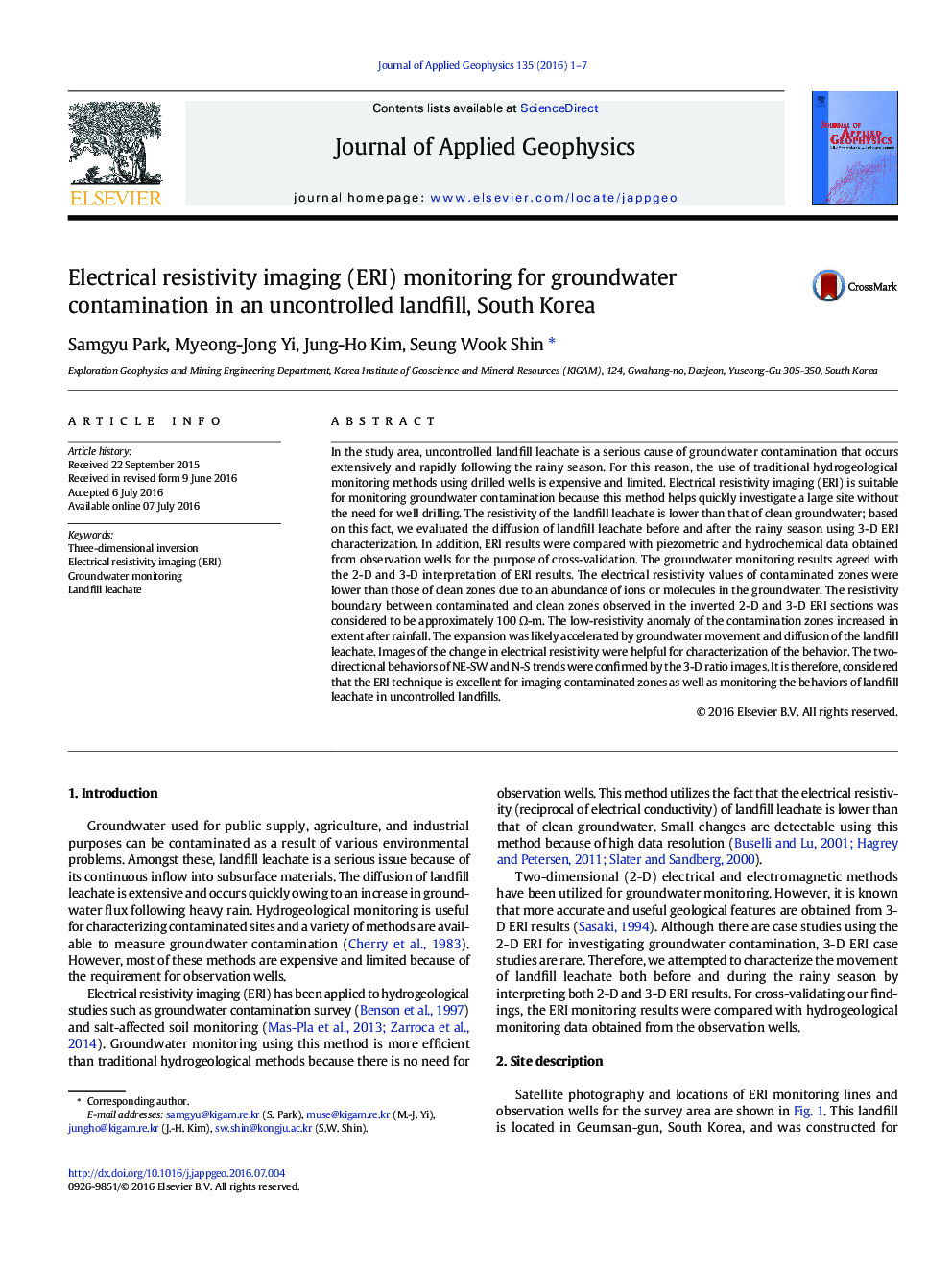| کد مقاله | کد نشریه | سال انتشار | مقاله انگلیسی | نسخه تمام متن |
|---|---|---|---|---|
| 4739685 | 1641116 | 2016 | 7 صفحه PDF | دانلود رایگان |
Highlight
• Performed 3-D ERI monitoring for an evaluation of groundwater contamination in an uncontrolled landfill
• Conducted 2-D and 3-D inversion and interpretation
• Interpreted results are in accordance with groundwater monitoring data.
• Resistivity change ratio is useful for evaluating a diffusion of landfill leachate.
In the study area, uncontrolled landfill leachate is a serious cause of groundwater contamination that occurs extensively and rapidly following the rainy season. For this reason, the use of traditional hydrogeological monitoring methods using drilled wells is expensive and limited. Electrical resistivity imaging (ERI) is suitable for monitoring groundwater contamination because this method helps quickly investigate a large site without the need for well drilling. The resistivity of the landfill leachate is lower than that of clean groundwater; based on this fact, we evaluated the diffusion of landfill leachate before and after the rainy season using 3-D ERI characterization. In addition, ERI results were compared with piezometric and hydrochemical data obtained from observation wells for the purpose of cross-validation. The groundwater monitoring results agreed with the 2-D and 3-D interpretation of ERI results. The electrical resistivity values of contaminated zones were lower than those of clean zones due to an abundance of ions or molecules in the groundwater. The resistivity boundary between contaminated and clean zones observed in the inverted 2-D and 3-D ERI sections was considered to be approximately 100 Ω-m. The low-resistivity anomaly of the contamination zones increased in extent after rainfall. The expansion was likely accelerated by groundwater movement and diffusion of the landfill leachate. Images of the change in electrical resistivity were helpful for characterization of the behavior. The two-directional behaviors of NE-SW and N-S trends were confirmed by the 3-D ratio images. It is therefore, considered that the ERI technique is excellent for imaging contaminated zones as well as monitoring the behaviors of landfill leachate in uncontrolled landfills.
Journal: Journal of Applied Geophysics - Volume 135, December 2016, Pages 1–7
